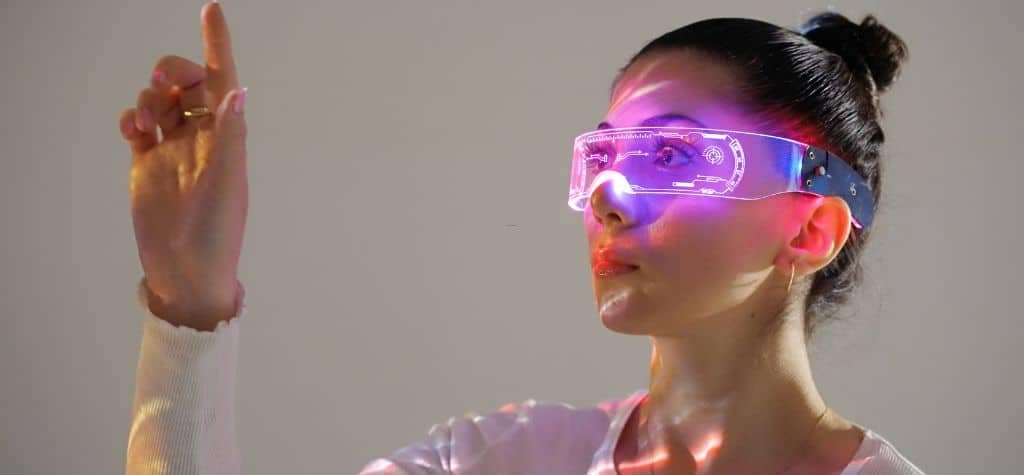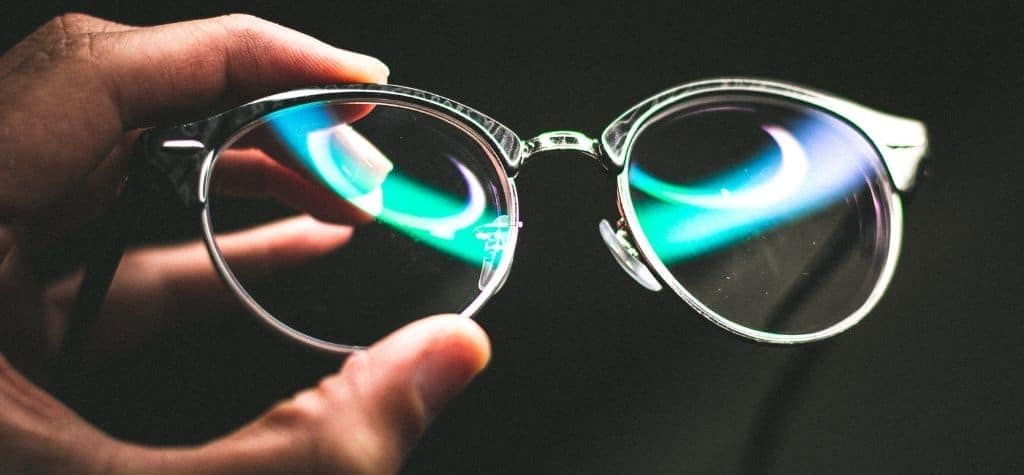Smart glasses are quickly emerging as the next big thing in wearable tech. From integrating augmented reality (AR) to streaming audio and taking hands-free photos, these futuristic frames promise a lot. But do they live up to the hype, or are they just another fleeting gadget?
Let’s uncover the full picture of what smart glasses are, how they work, who they’re for, and whether they’re worth your hard-earned money.
What Are Smart Glasses?

Definition and Core Technology
Smart glasses are high-tech eyewear equipped with digital features like displays, sensors, cameras, and microphones. They aim to enhance the real world with virtual elements, allowing users to view notifications, take photos, get navigation, and more—right from their glasses.
History and Evolution of Smart Glasses
It started with Google Glass in 2013, a bold attempt to mix computing with everyday eyewear. While ahead of its time, it faced backlash over privacy and design. Since then, smart glasses have become sleeker, more stylish, and more useful—thanks to brands like Meta, Bose, and Xreal entering the scene.
How Do Smart Glasses Work?
Key Components
- Display Lens or HUD: Projects visuals such as notifications or AR graphics.
- Microphones: Allow voice control or interaction with virtual assistants.
- Cameras: For capturing images and videos on the go.
- Speakers/Bone Conduction Tech: Deliver sound without headphones.
- Touch Controls or Gestures: For user interaction without buttons.
Integration with Mobile Devices
Smart glasses often connect via Bluetooth to your phone or smartwatch. Through mobile apps, users can customize features, access data, or sync content—making these glasses an extension of your smart ecosystem.
Different Types of Smart Glasses Available Today
Audio Smart Glasses
Brands like Bose and Amazon have developed glasses with built-in speakers for music, podcasts, and phone calls—no earbuds needed.
AR Smart Glasses
These overlay information, navigation, or even 3D visuals into your environment. Examples include Xreal Air and Magic Leap.
Prescription Smart Glasses
Smart glasses can now be tailored to your prescription while still offering tech features.
Industrial/Enterprise Smart Glasses
Used by professionals for real-time data in sectors like logistics, healthcare, and manufacturing—examples include Vuzix and Google Glass Enterprise.
Notable Brands and Models in the Market
- Meta Ray-Ban Stories – Stylish design meets photo and video capture.
- Google Glass Enterprise Edition – Focused on hands-free productivity.
- Xreal Air (formerly Nreal) – Delivers immersive AR video experiences.
- Vuzix Blade – Great for enterprise and personal entertainment.
Key Features That Make Smart Glasses “Smart”

Augmented Reality (AR) Overlay
Enhance your world with weather updates, directions, or translations that appear before your eyes.
Voice Control and AI Assistants
Interact with Alexa, Siri, or Google Assistant for seamless hands-free control.
Fitness and Health Monitoring
Some models track steps, calories, posture, and UV exposure.
Photography and Video
Capture moments instantly without reaching for your phone—ideal for travelers and vloggers.
Benefits of Using Smart Glasses
Hands-Free Functionality
Whether you’re navigating a new city or cooking dinner, smart glasses let you multitask without lifting a device.
Enhanced Productivity for Professionals
In medicine, logistics, and remote work, smart glasses provide live visuals, data overlays, or instructional videos directly in your line of sight.
Real-Time Information Access
From calendar alerts to real-time translations, info is always accessible with just a glance.
Improved Accessibility
Smart glasses can assist visually impaired users with real-time audio descriptions, object recognition, and facial identification.
Use Cases Across Different Fields
Healthcare
Doctors use smart glasses for live consultations, remote surgeries, and guided procedures.
Education and Training
They enable immersive learning, virtual classrooms, and real-time skill training.
Manufacturing and Logistics
Used for inventory checks, remote troubleshooting, and step-by-step assembly instructions.
Everyday Consumer Use
From fitness tracking to social media uploads, smart glasses offer convenience for tech-savvy users.
Limitations and Common Concerns

Privacy and Surveillance Issues
With built-in cameras and microphones, there are concerns over unauthorized recording or data collection.
Battery Life and Performance
Battery life typically ranges from 2 to 6 hours. AR-intensive tasks drain batteries quickly.
Price vs. Value
High-end models can cost upwards of $500. For casual users, that might be steep without clear ROI.
Design and Social Acceptance
Some people still feel awkward wearing visible tech on their face in public.
Are Smart Glasses Worth It for Everyday Consumers?
Comparing to Smartphones and Smartwatches
Smart glasses offer unique benefits like AR and hands-free interaction but still depend heavily on smartphones. They aren’t replacements—yet.
Pros and Cons
| Pros | Cons |
|---|---|
| Hands-free control | Limited battery life |
| Stylish and portable | Privacy concerns |
| Expanding use cases | Expensive for casual users |
Smart Glasses in 2025: What’s New?
AI Integration
AI-driven features like real-time translation, gesture recognition, and contextual awareness are game changers.
Lightweight and Stylish Designs
Gone are the bulky headsets. Brands now offer sleeker, lighter, and more fashionable designs.
Improved Battery and Displays
Advancements in micro-LED and efficient chips are pushing display quality and battery life forward.
What to Consider Before Buying Smart Glasses
Compatibility
Ensure the glasses work with your phone OS (Android or iOS) and existing apps.
Purpose and Use Cases
Are you buying for productivity, fitness, AR, or entertainment? Match features to needs.
Budget and Features
Consider whether premium features like AR are worth the extra cost for your lifestyle.
How to Choose the Right Pair of Smart Glasses
Top Buying Tips
- Read user reviews
- Compare battery life
- Check warranty and support
- Ensure comfort and fit
Feature Checklist
| Feature | Important? |
|---|---|
| AR display | ✓ |
| Voice control | ✓ |
| Camera | Optional |
| Prescription-ready | ✓ |
| Long battery life | ✓ |
Maintenance and Care Tips for Longevity

Cleaning and Storage
Use a microfiber cloth. Keep them in a hard case when not in use.
Battery and Software Updates
Charge regularly and install firmware updates to maintain optimal performance.
Smart Glasses vs. Other Wearables
Smart Glasses vs. Smartwatches
Smart glasses offer more immersive interaction, while smartwatches are better for fitness tracking.
Smart Glasses vs. AR Headsets
Glasses are lightweight and wearable in public, unlike bulky headsets designed for VR or indoor use.
Future Outlook: What’s Next for Smart Glasses?
Trends and Innovations
Expect more AI-powered glasses, integration with smart homes, and better AR capabilities.
Challenges for Mainstream Adoption
Battery life, pricing, and social perception still need refinement before smart glasses become everyday essentials.
Frequently Asked Questions (FAQs)
Do Smart Glasses Work Without a Phone?
Most need a phone for full functionality, though some features can work offline.
Can You Use Smart Glasses While Driving?
Some are safe for driving, especially those with audio-only functions, but AR overlays can be distracting.
Are Smart Glasses Safe for Your Eyes?
Yes, they are designed with eye safety in mind, but moderation is key—especially with AR displays.
Do They Have Prescription Lenses?
Many brands now offer prescription options, especially when ordered directly from the manufacturer.
How Long Does the Battery Last?
Battery life varies between 2 to 8 hours depending on usage and model.
Are There Affordable Options?
Yes, some audio smart glasses start at under $150, though AR glasses are generally more expensive.
Final Verdict: Are Smart Glasses a Smart Investment?
Smart glasses aren’t just hype—they’re evolving rapidly and becoming more practical. If you value hands-free convenience, cutting-edge tech, and are willing to deal with a few trade-offs, they can be a worthwhile investment. For casual users, audio or camera-based glasses are a great way to start without breaking the bank.

